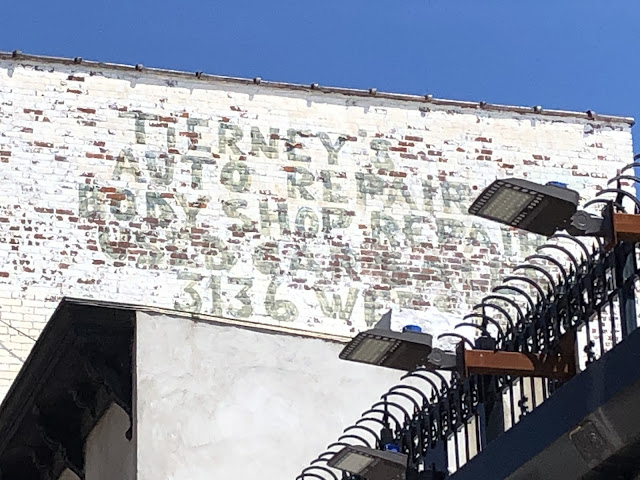As I ride around New York City, I sometimes see “ghosts.”
Now, before you assume that I’m going insane, I am—at least in the opinion of some people—already there. Seriously, though, among the “ghosts” I see are buildings that are vacant or being used for entirely different purposes than the ones for which they were intended.
Also, there are what Esther Crain, the author of Ephemeral New York (one of my favorite blogs) calls “ghost” signs. They usually were painted on the sides of buildings to advertise some business or another. As often as not, that establishment is long gone. I found an exception just a few blocks from my new apartment:
Tierney Auto Body works is still in the same location but the sign has to be at least 40 years old: The lower part of the sign (not visible in the photo) gives the telephone number—without an area code. Until 1984, all five boroughs of New York City were covered by the 212 Area Code. But as fax machines and, later, cell phones become more common, the 212 area code was running out of phone numbers and new area codes were added. It then became necessary to dial an area code when calling within New York City.
While riding the other day, I discovered another “ghost” sign that dates from around the same time, or earlier:
Prospect Hospital, its name barely visible at the top of the sign, closed in 1985. That sign, like the one for Tierney, gives a phone number without an area code.
Another thing I found interesting is the sign’s proclamation that “alcoholism is a treatable disease.” Although researchers and doctors had been saying as much since the 1930s (when, incidentally, Alcoholics Anonymous was founded) that idea started to displace, in public perception, the old notion that alcoholism is a moral failing during the 1960s.
Speaking of the 1960s: By that time, artists and intellectuals who were associated with the later part of the Harlem Renaissance had moved to East Elmhurst and Jamaica in Queens or (as in the case of John Coltrane) to Long Island. But during the Renaissance, theaters for movies, plays, vaudeville and other kinds of shows and exhibits flourished in Harlem. The “ghost” of one “shadows” a building that now serves as a church on 145th Street:
So, if nothing else, my bike trips show that you don’t have to be Demi Moore, Patrick Swayze or Whoopi Goldberg to see “ghosts” during your ride!



No comments:
Post a Comment